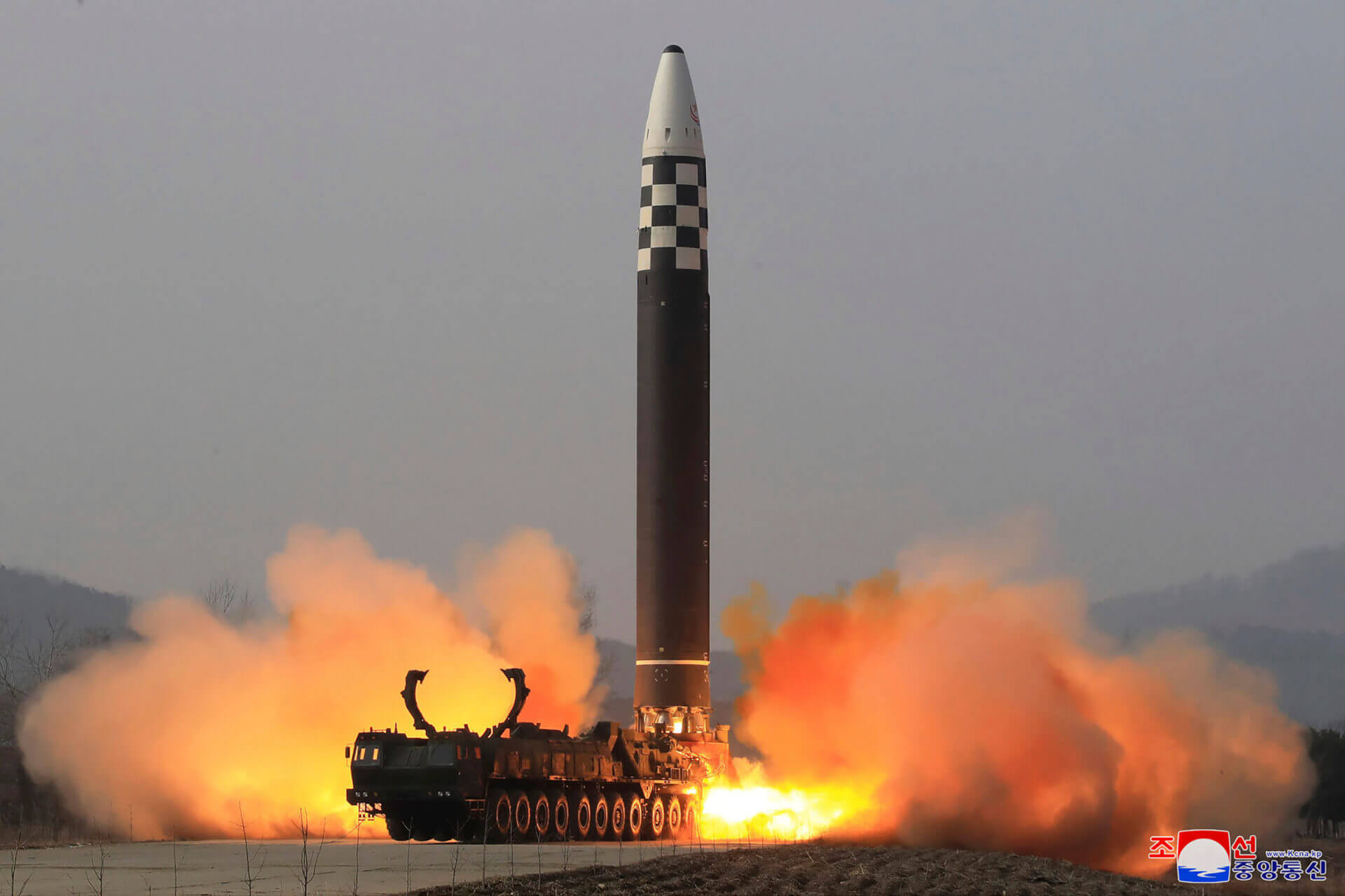North Korea fired two short-range ballistic missiles toward Japan on Monday, following an inter-continental ballistic missile (ICBM) test on Saturday. The recent tests followed the country’s leadership’s threat to turn the Pacific into a “firing range.”
Ballistic Missile Tests
On Monday, the secretive regime confirmed that it fired two projectiles from a multiple rocket launcher, aimed at targets 395km and 337km away, respectively.
State news agency KCNA said the 600 mm multiple rocket launcher is the North Korean military’s “latest type of multiple launch precision attack weapon system.”
North Korea’s state-run television aired the test launch of a long-range ballistic missile into the sea off Japan's west coast after warning of a strong response to military drills by South Korea and the United States https://t.co/VNLjrFRyhx pic.twitter.com/DURArWKTxC
— Reuters Asia (@ReutersAsia) February 19, 2023
The Japanese Defence Ministry said that the missiles reached a maximum altitude of about 100km and 50km and fell outside Japan’s Exclusive Economic Zone.
ICBM Test
On Saturday, North Korea fired the Hwasongpho-15 ICBM, which landed in the sea off Japan’s western coast.
KCNA said that the “suddenly organised” test aimed to “re-confirm” and verify the “reliability of the weapon system,” enhance the military’s preparedness, and check the “effectiveness and combat capability” of the North Korea’s nuclear deterrence.
It added that the missile reached a maximum altitude of 5,768.5 km and flew 989 km for 4,015 seconds before “accurately hitting the pre-set area” in the East Sea of Korea.
It is reported that the missile flew at a distance of approximately 990 kilometers for 67 minutes before hitting a pre-set area in waters between the Korean Peninsula and Japan.
— NEXTA (@nexta_tv) February 19, 2023
North Korea’s Threats
Pyongyang said that its latest “surprise” drill was conducted to counter threats posed by the “present situation,” as military threats from the US and South Korea are “getting serious to the extent that cannot be overlooked.” It added that its test is proof of its capacity to carry out a “fatal nuclear counterattack” on “hostile forces.”
Kim Yo Jong, vice department director of the Central Committee of the Workers’ Party of Korea and sister of Supreme Leader Kim Jong-un, said in a statement on Monday that “the frequency of using the Pacific as [North Korea’s] firing range depends upon the US forces’ action character.”
She added that the country possesses “satisfactory technology and capability” and will now focus on “increasing the quantity of their force.”
Official Footage- North Korea launching ‘#HWASONG-15’ #ICBM under a ‘Sudden launching drill’ in response to US-S Korea bilateral exercise. The #missile flew 989 Km in 66 minutes, reached an altitude of 5768 Km and reportedly landed into Sea of #Japan. #NorthKorea #US #SouthKorea pic.twitter.com/8n0MZErUYW
— EurAsian Times (@THEEURASIATIMES) February 20, 2023
International Response
South Korea’s Joint Chiefs of Staff strongly condemned the launches as a “grave provocation” and called for immediate cessation.
Further, the South Korean foreign ministry sanctioned four individuals and five entities linked to the North’s weapons programmes on Monday. These included one South African national and two Singaporean shipping firms.
In addition, the Saturday ICBM test prompted the US to hold joint air drills with South Korea and Japan separately on Sunday.
Concerningly, Chung Jin-suk, the chief of the ruling People Power Party, said on Monday that Seoul should consider acquiring its own nuclear weapons to counter Pyongyang’s threats.
“We have a clear option on North Korea’s nuclear weapons. We must first secure a concrete nuclear deterrence. ... We need to strengthen our Kill Chain so North Korea can never rise to its feet again if it uses nukes on the Korean Peninsula,” Chung said during a party meeting.

